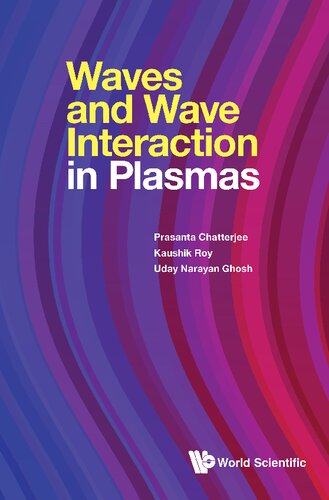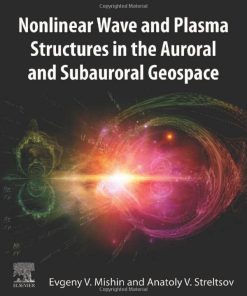Waves and Wave Interaction in Plasmas 1st Edition
$50.00 Original price was: $50.00.$25.00Current price is: $25.00.
Waves and Wave Interaction in Plasmas 1st Edition – Ebook Instant Download/Delivery ISBN(s): 9789811265334,9789811265358,981126533X

Product detail:
- ISBN-10 : 981126533X
- ISBN-13 : 978-9811265334
- Author: Prasanta Chatterjee, Kaushik Roy, Uday Narayan Ghosh
This book is written in a lucid and systematic way for advanced postgraduates and researchers studying applied mathematics, plasma physics, nonlinear differential equations, nonlinear optics, and other engineering branches where nonlinear wave phenomena is essential. In sequential order of the book’s development, readers will understand basic plasmas with elementary definitions of magnetized and unmagnetized plasmas, plasma modeling, dusty plasma and quantum plasma. Following which, the book describes linear and nonlinear waves, solitons, shocks and other wave phenomena, while solutions to common nonlinear wave equations are derived via standard techniques. Readers are introduced to elementary perturbation and non-perturbation methods. They will discover several evolution equations in different plasma situations as well as the properties of solitons in those environments. Pertaining to those equations, readers will learn about their higher order corrections, as well as their different forms and solutions in non-planar geometry. The book offers further studies on different types of collisions between solitons in plasma environment, phenomena of soliton turbulence as a consequence of multi-soliton interactions, properties of large amplitude solitary waves which are discovered via non-perturbative Sagdeev’s Pseudopotential Approach, as well as the speed and shape of solitons. Finally, the book reveals possible future developments of research in this rich field.
Table of contents:
Chapter 1. Introduction to Plasmas
Chapter 2. Introduction to Waves in Plasma
Chapter 3. Solution of Nonlinear Wave Equations
Chapter 4. RPT and Some Evolution Equations
Chapter 5. Dressed Soliton and Envelope Soliton
Chapter 6. Evolution Equations in Nonplanar Geometry
Chapter 7. Collision of Solitons
Chapter 8. Sagdeev’s Pseudopotential Approach
Chapter 9. Conclusion and Future Scopes
People also search:
You may also like…
Relationships & Lifestyle - Psychological Self-Help
Physics - Plasma Physics
Driven Rotation, Self-Generated Flow, and Momentum Transport in Tokamak Plasmas John Rice
Science (General)
Kappa Distributions. Theory and Applications in Plasmas 1st Edition Edition George Livadiotis (Eds.)
Physics - Astronomy: Astrophysics
Nonlinear Wave and Plasma Structures in the Auroral and Subauroral Geospace 1st Edition
Housekeeping & Leisure - Gardening
Sustainable Horticulture: Microbial Inoculants and Stress Interaction 1st Edition Seymen
Politics & Philosophy - Social Sciences
Economic Diplomacy and Foreign Policy-making 1st ed. Edition Charles Chatterjee
Technique - Electronics: Signal Processing











